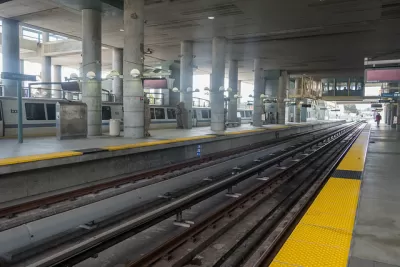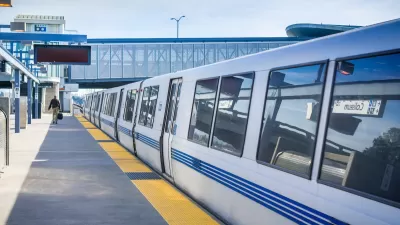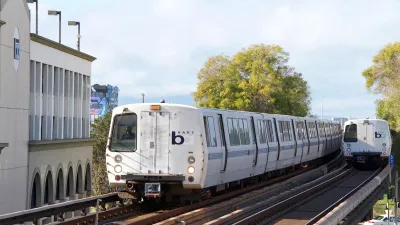Sam Raby argues that BART’s pay by distance fair structure exacerbates transit inequities.

San Francisco BART riders pay more if they go farther, but in a city as expensive as San Francisco many of those who ride the furthest have the least to spend. Sam Raby spoke to a local handyman, Mark Rogers Nelson, who would sometimes find himself priced out of transit. "Nelson was homeless up until recently, and he remarks that he often got 'stuck on one side' of the Bay during this period because of BART’s high fares," writes Raby. People with lower incomes are more likely to be found further from the center of San Francisco and may have to take longer commutes as a result. "And while the median income of the Bay Area Metro is around $97,000, more than 50 percent of workers in the Bay make less than $50,000 a year, according to the most recent census data," according to Raby.
BART leadership points out that pricing for service means riders pay for what they use. Flat fares mean riders taking short trips subsidize the service for everyone else. "While the New York MTA, the Chicago 'L,' and the Los Angeles Metro charge a flat fare to ride anywhere in their network, BART is one of three rapid-transit systems that charge passengers by distance. (Washington, D.C.’s WMATA and Philadelphia’s PATCO are the other two)" according to Raby. But systems like the CTA in Chicago do not cover the same distances as the BART, so they face a different set of challenges.
A related issue is the number of transit operators in the Bay Area. While area residents can pay for many different services with Clipper Fare cards, those services set their own fares and have their own policies. "In an effort to ease the burden on low-income riders, the Metropolitan Transportation Commission (MTC), the transportation planning and financing agency for the entire Bay Area, is pushing for region-wide system reforms," writes Raby.
FULL STORY: The inequity of pay-by-distance transit in the Bay Area

Trump Administration Could Effectively End Housing Voucher Program
Federal officials are eyeing major cuts to the Section 8 program that helps millions of low-income households pay rent.

Planetizen Federal Action Tracker
A weekly monitor of how Trump’s orders and actions are impacting planners and planning in America.

Ken Jennings Launches Transit Web Series
The Jeopardy champ wants you to ride public transit.

Washington Legislature Passes Rent Increase Cap
A bill that caps rent increases at 7 percent plus inflation is headed to the governor’s desk.

From Planning to Action: How LA County Is Rethinking Climate Resilience
Chief Sustainability Officer Rita Kampalath outlines the County’s shift from planning to implementation in its climate resilience efforts, emphasizing cross-departmental coordination, updated recovery strategies, and the need for flexible funding.

New Mexico Aging Department Commits to Helping Seniors Age ‘In Place’ and ‘Autonomously’ in New Draft Plan
As New Mexico’s population of seniors continues to grow, the state’s aging department is proposing expanded initiatives to help seniors maintain their autonomy while also supporting family caregivers.
Urban Design for Planners 1: Software Tools
This six-course series explores essential urban design concepts using open source software and equips planners with the tools they need to participate fully in the urban design process.
Planning for Universal Design
Learn the tools for implementing Universal Design in planning regulations.
Heyer Gruel & Associates PA
Ada County Highway District
Institute for Housing and Urban Development Studies (IHS)
City of Grandview
Harvard GSD Executive Education
Toledo-Lucas County Plan Commissions
Salt Lake City
NYU Wagner Graduate School of Public Service





























